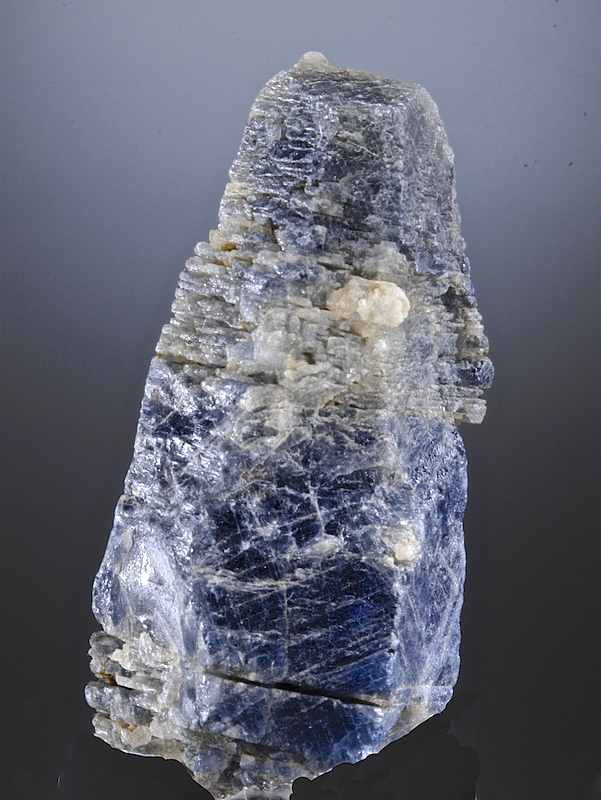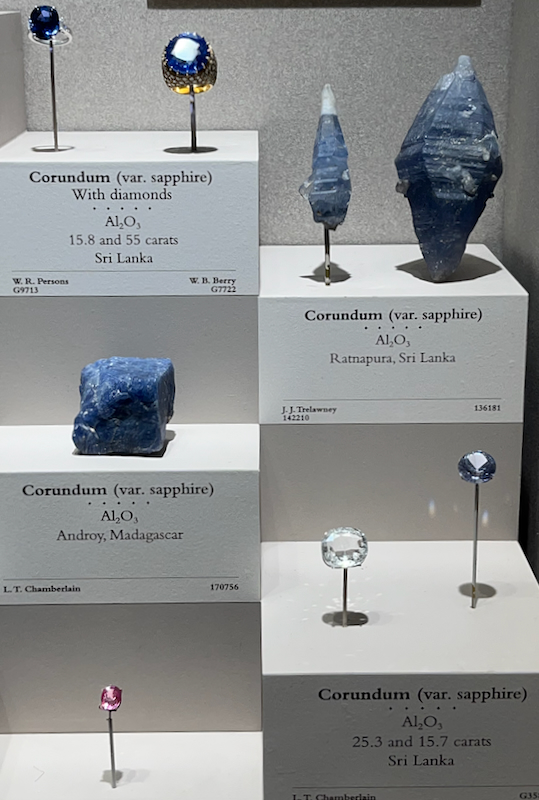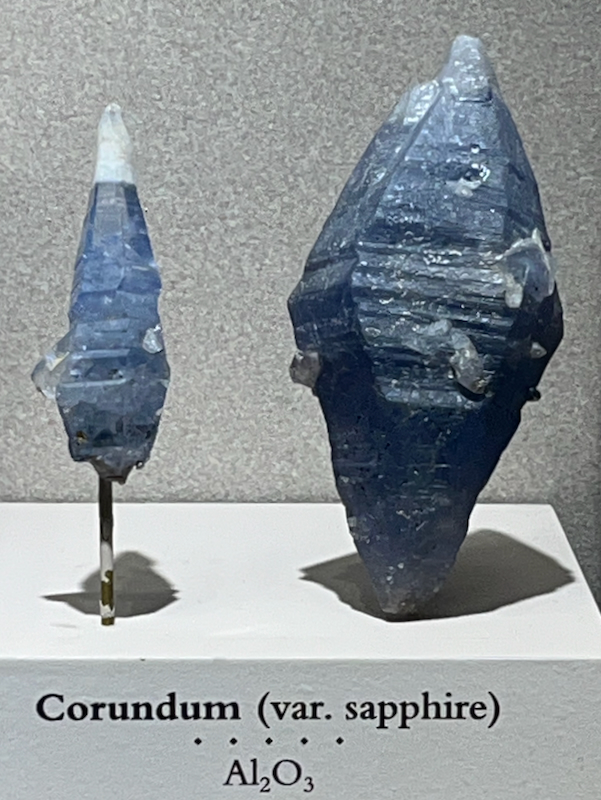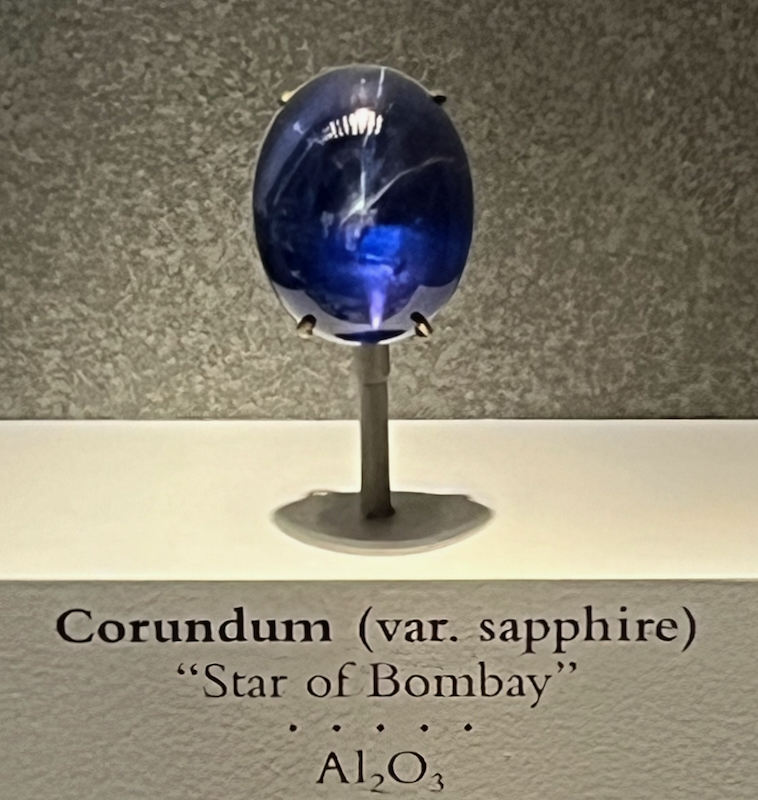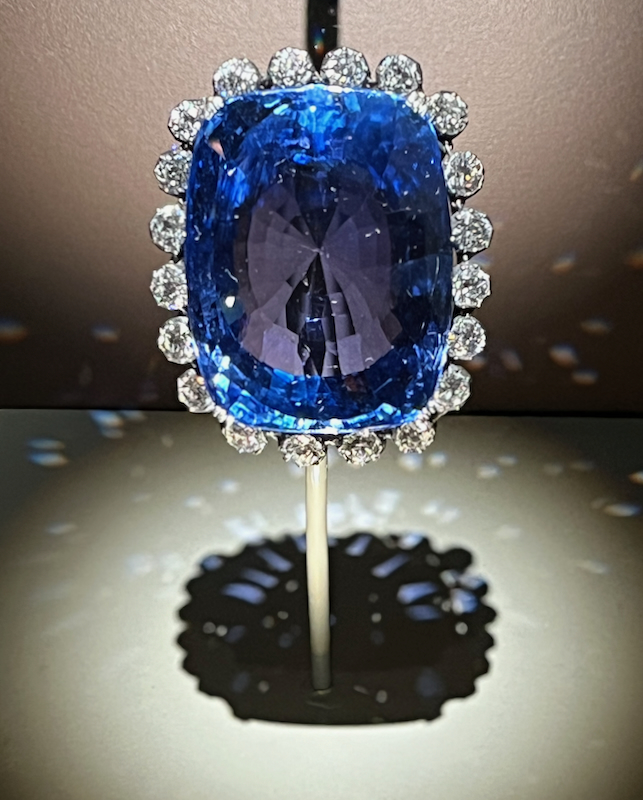Sapphire
Not to be upstaged by ruby, sapphire is a deep blue variety of the very hard mineral corundum. Actually, ruby and sapphire are so closely related that they’re really just two parts of a color range or “spectrum.” Ruby’s on the red end, sapphire’s on the blue end, and in between you have purplish red rubies, purplish blue sapphires, and just plain purple corundum, which, actually, gemologists also call sapphire. If you go to one of the “dig your own” sapphire mines, you can also find green, yellow, pink, or orange sapphires. (Not red sapphires though, because if it’s red, it’s a ruby.) If a sapphire is the classic blue, though, its color is mainly caused by tiny amounts of iron and titanium. One of the most valuable types of deep blue sapphire is the star sapphire. When you cut and polish a sapphire into a rounded dome shape—called a cabochon—if you’re lucky it will show “asterism.” (“Aster” means star.) This asterism happens because the gem contains needles of rutile or another mineral that are so thin that you can’t see them, but they change how the gem reacts to light. As you move a star sapphire in the light, the needles catch and reflect the light in a way that makes it look like a star is moving inside the gem.
| Formula | Group or Type | Shape | Hardness | Specific Gravity | Streak | Luster |
|---|---|---|---|---|---|---|
| Al2O3 | Corundum | Hexagonal | 9 | 3.9–4.1 | White | Adamantine to waxy |
